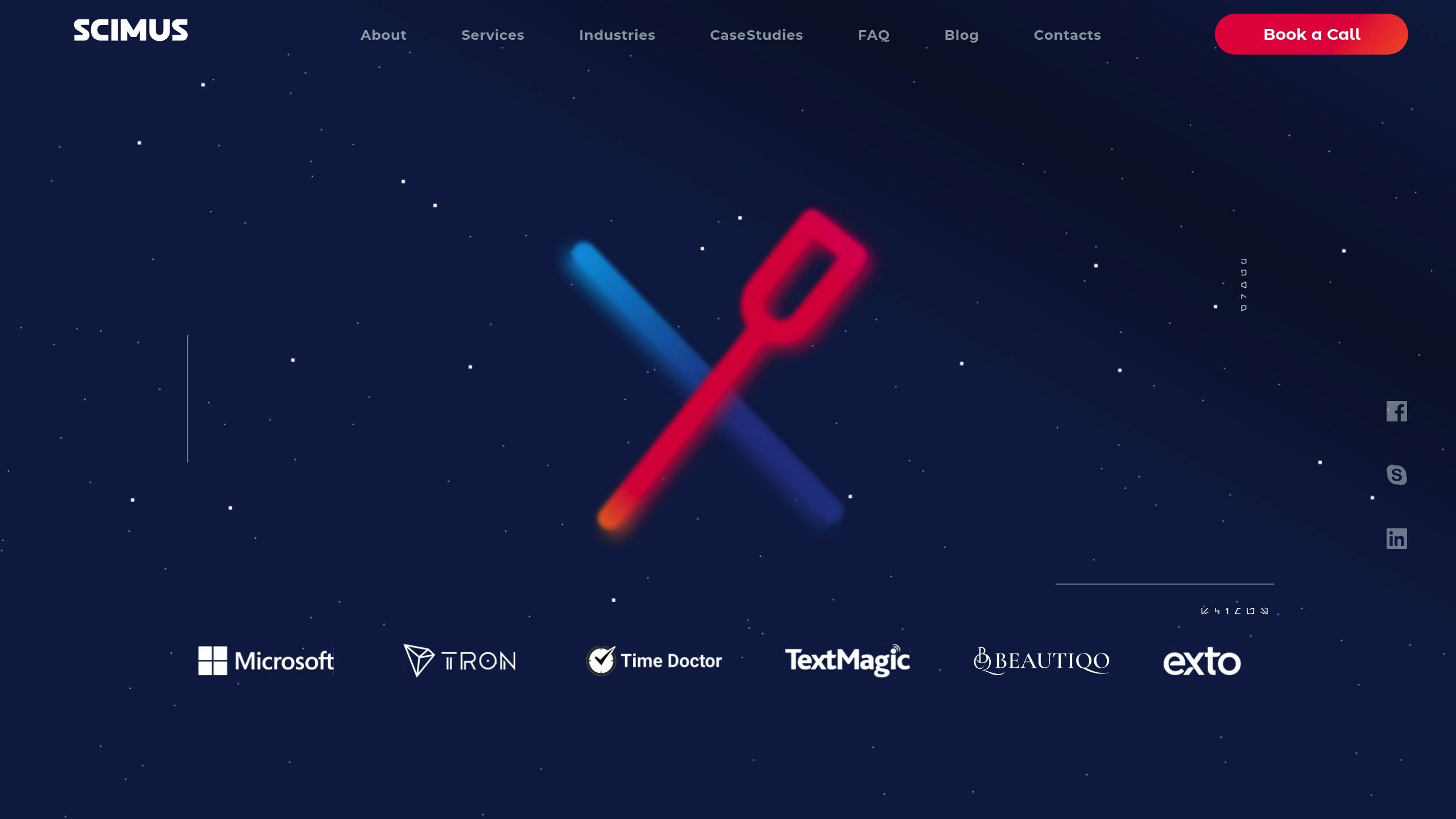Contents
Outsourcing software development can save up to 70% in costs and speed up product launches, but it comes with challenges that can derail your project if not managed well.
Here are the 7 most common outsourcing challenges and how to tackle them:
- Mismatched Goals: Align business objectives from the start with clear, measurable goals.
- Communication Issues: Use tools like Slack or Zoom and schedule regular check-ins.
- Choosing Based on Price Alone: Prioritize vendors with proven expertise over cost.
- Poor Project Organization: Use project management tools like Jira or Trello to stay organized.
- Unclear Requirements: Define detailed specifications and review them frequently.
- Time Zone Differences: Opt for nearshore outsourcing for overlapping work hours.
- Limited Team Scalability: Choose vendors who can scale their teams as needed.
Quick Tip: Start with a small pilot project to test vendor capabilities before committing to a long-term partnership. Use tools, clear communication, and structured planning to ensure success.
For a deeper dive into these challenges and practical solutions, read on.
Nearshore Software Outsourcing: Top 5 Challenges and Solutions
7 Main Development Outsourcing Challenges
Software development outsourcing can be tricky, with several challenges that might derail your project. Here are seven common issues and how to tackle them effectively.
1. Mismatched Business Goals
When business goals between the client and vendor don’t align, it can throw the entire project off track. For instance, differing expectations can lead to unsatisfactory results. The fix? Set clear, measurable objectives right from the start and schedule regular progress reviews to stay aligned.
2. Language and Team Communication
Poor communication can lead to confusion and delays. Relying only on email often creates misunderstandings. Instead, use modern tools like Slack or Zoom for real-time collaboration. Regular check-ins and ensuring everyone speaks the project’s primary language can go a long way in smoothing communication.
3. Price-Based Decision Making
Choosing the cheapest vendor might seem like a smart move, but it often results in lower quality and missed deadlines. Instead of focusing solely on cost, look for vendors with proven expertise, strong technical skills, and transparent pricing. Remember, quality work pays off in the long run.
4. Poor Project Organization
Without solid project management, it’s hard to keep track of progress or meet deadlines. Tools like Jira or Basecamp can help organize tasks, while agile methodologies improve visibility and adaptability throughout the development process.
5. Unclear Project Requirements
Vague requirements are a recipe for disaster in development projects. Clearly defined specifications and regular review sessions ensure everyone is on the same page. Detailed planning is key to meeting both technical and business goals.
6. Working Across Time Zones
Time zone differences can slow down collaboration. One solution is nearshore outsourcing, such as working with teams in Latin America. This approach offers overlapping work hours and often a shared cultural understanding, making collaboration much smoother.
7. Limited Team Growth Options
If your vendor can’t scale their team when needed, it can lead to delays and overburdened staff. Choose partners with scalable teams who can adapt to your project’s changing needs, keeping things on track without interruptions.
Next, we’ll explore practical solutions to tackle these challenges head-on.
Solutions for Outsourcing Success
Tackle outsourcing challenges and build stronger partnerships with these focused strategies.
Choosing the Right Project Management Tools
The right tools can make or break an outsourcing project. Platforms like Jira, Asana, and Trello help track tasks effectively, while Slack ensures smooth real-time communication. Here’s a quick comparison:
| Feature Category | Key Features | Recommended Tools |
|---|---|---|
| Communication | Real-time chat, video calls | Slack, Zoom |
| Task Management | Agile boards, time tracking | Jira, Trello |
| Document Sharing | Version control, collaboration | Confluence, Google Workspace |
| Code Repository | Source control, review system | GitHub, GitLab |
Once you’ve chosen your tools, make sure to outline your technical needs in detail.
Planning Skills and Requirements
Unclear project requirements can derail progress. Avoid this by documenting key details like:
- Your technical stack and its specifications
- The team structure you’ll need
- Delivery milestones and timelines
- Quality assurance standards and benchmarks
This documentation ensures every phase of the project meets specific criteria and aligns with your business objectives.
Tips for Vendor Selection
Picking the wrong vendor can lead to mismatched expectations. Instead of focusing solely on cost, prioritize partners with proven expertise and a good cultural fit. Look for:
- A portfolio of similar successful projects
- Relevant technical certifications and partnerships
- Positive client testimonials or references
- Strong security protocols and compliance measures
- The ability to scale teams as needed
To confirm your choice, consider starting with a small trial project.
Testing With Pilot Projects
A pilot project is a great way to evaluate a vendor’s capabilities. Start with a manageable task, like a feature enhancement or module development. Use this opportunity to assess:
- Work quality and attention to detail
- Communication and responsiveness
- Problem-solving skills
- Ability to meet deadlines
- Team collaboration dynamics
This small-scale test can provide valuable insights before committing to a larger partnership.
sbb-itb-116e29a
Scimus Development Services Overview

Scimus tackles outsourcing challenges head-on with specialized software development and quality assurance services. By utilizing nearshore solutions, they enhance communication and collaboration while keeping costs manageable. These strategies build on earlier solutions, showing Scimus’s focus on delivering smooth and effective outsourcing experiences.
Scimus Development Options
Scimus provides a range of services tailored to address common outsourcing hurdles. Here’s a snapshot of their offerings:
| Service Category | Key Features | Industry Focus |
|---|---|---|
| Custom Software | Web & Mobile Apps, Enterprise Solutions | Healthcare, Fintech |
| Quality Assurance | Manual Testing, Test Automation | E-commerce, Education |
| Maintenance | Application Support, Performance Optimization | Real Estate, Travel |
| Specialized Development | Blockchain Integration, React Native | Startups, Enterprise |
Each service includes strict quality checks and clear communication practices to avoid typical outsourcing issues. For instance, their healthcare solutions are built to comply with industry regulations while supporting agile workflows.
Scimus Problem-Solving Methods
Scimus uses several strategies to address outsourcing challenges effectively:
- Time Zone Alignment: Nearshore teams in Latin America ensure overlapping work hours with U.S. clients, improving responsiveness and cultural compatibility.
- Quality Framework: A multi-step process includes pre-development workshops, automated testing, regular code reviews, continuous integration, and client feedback at every sprint.
- Team Scaling: Local management ensures high retention and smooth team expansion, maintaining project quality and consistency.
- Communication Practices: Their project management approach includes daily stand-ups with clients, dedicated project managers in matching time zones, detailed documentation, and regular milestone reviews to keep everyone aligned.
Conclusion
Key Takeaways
Outsourcing development comes with its share of challenges, such as mismatched goals and time zone gaps. However, these hurdles can be tackled with structured planning, clear communication, and flexible project management. By addressing these areas, companies can turn potential obstacles into opportunities for growth and efficiency.
Real-world examples show that aligning business goals with agile and nearshore strategies leads to strong results. These lessons provide a solid foundation for creating effective and long-lasting outsourcing relationships.
Creating Strong Partnerships
To build successful outsourcing partnerships, it’s crucial to set clear expectations and define measurable goals. Using the risk management and vendor selection strategies we’ve discussed, businesses can ensure their partnerships are productive and scalable.
Starting with pilot projects is a smart way to test the waters. This allows teams to:
- Check how well communication flows
- Evaluate technical skills
- Understand cultural compatibility
- Review the quality of deliverables
Ongoing feedback and a focus on continuous improvement help strengthen team collaboration. Tools for teamwork and regular check-ins also play a big role. Ultimately, strong partnerships thrive on open communication and shared objectives, paving the way for future success.
FAQs
What is the biggest problem with outsourcing?
The main challenges of development outsourcing often stem from misaligned goals and poor communication. Studies show that most project failures result from inadequate vendor evaluation and communication breakdowns.
Common issues include:
- Unclear expectations and deliverables
- Cultural and language barriers
- Time zone differences that hinder collaboration
- Concerns around data security and intellectual property
Understanding these challenges is crucial for setting up effective management strategies for offshore teams.
How to manage an offshore development team effectively?
Managing an offshore development team successfully requires a clear plan, consistent communication, and thoughtful scheduling. Companies that follow structured management practices often achieve better results and foster stronger teamwork.
Here are some key strategies:
| Management Area | Key Strategies |
|---|---|
| Strategic Vision | Set clear goals and define success metrics. |
| Communication | Schedule regular check-ins and use tools like Slack or Zoom. |
| Work Schedule | Plan overlapping hours for real-time interaction. |
| Project Management | Use Agile methods, including sprint planning. |
| Knowledge Transfer | Document workflows and provide thorough onboarding. |
For smoother collaboration, consider nearshore outsourcing – it offers overlapping work hours and minimizes cultural differences.
Related Blog Posts
- 10 Key Benefits of Development Outsourcing for Startups
- The Future of Outstaffing: What to Expect in Tech
- How AI is Transforming Software Development Outsourcing
- Risk-Based Regression Testing: Key Steps



